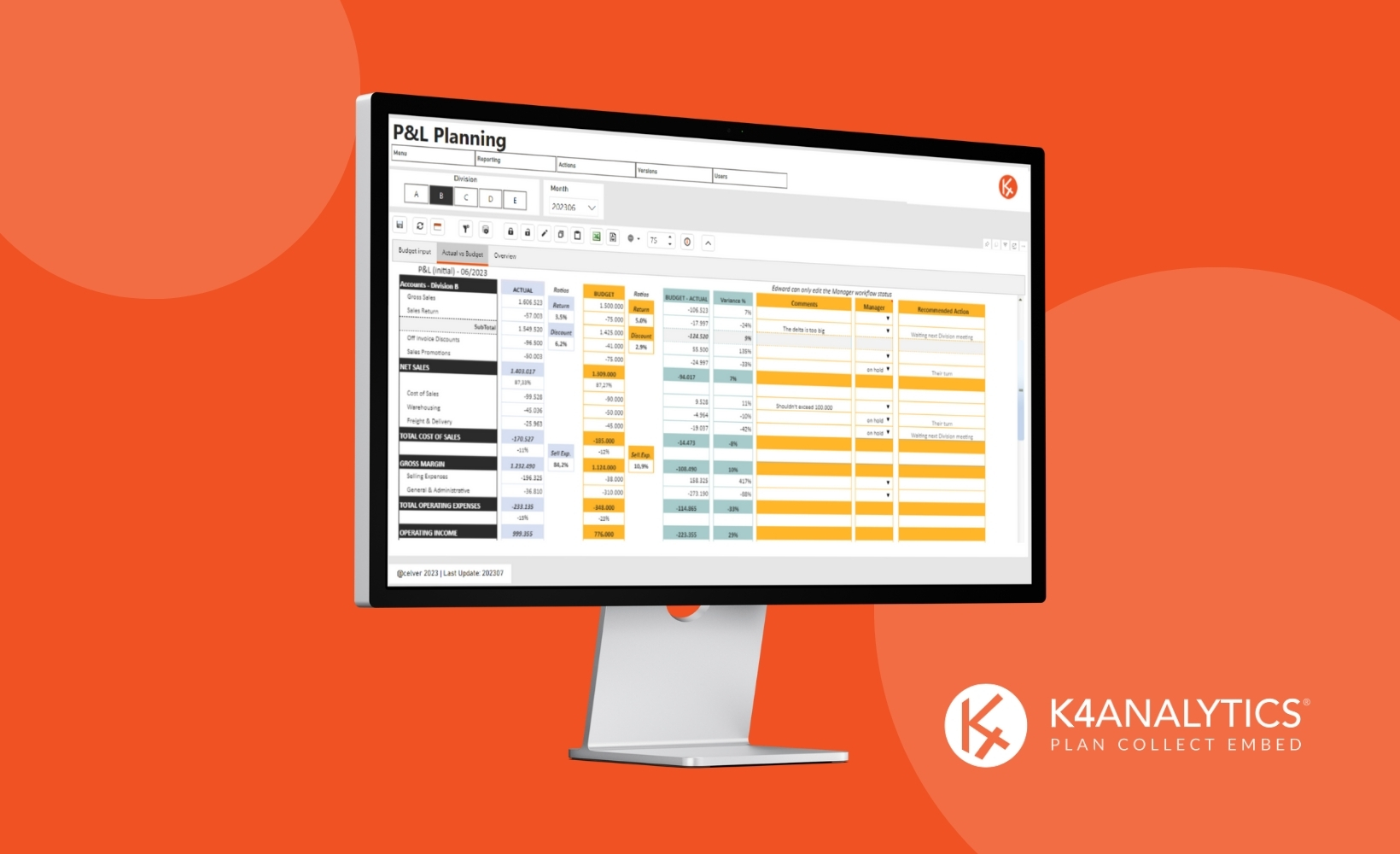Finance is a vital area for any company. In a context marked by instability and volatility, it is more important than ever to have a financial strategy that is proactive (and not reactive), something to which Financial Planning and Analysis (FP&A) provides an answer.
Within this area, financial analysis is particularly important, since the data obtained here will serve as support for making operational and strategic decisions about the organization’s future.
For this reason, in this article we will take a closer look at the financial analysis part, discussing its main goal and some key points to take into account in order to perform it optimally.
What is the goal of a company’s financial analysis?
The main goal of financial analysis is to generate information that allows defining the company’s financial strategy in a reliable way and based on data (not on intuition) through the study of both internal and external indicators.
The result is to provide financial managers with a tool that helps them to have a better understanding of the results and the functioning of the companies to be able to anticipate and define actions that allow the continuous improvement of the results.
Financial analysis: to what extent is it important to do it?
As a company’s turnover grows, it becomes essential to have a good financial analysis to ensure proper planning.
Financial analysis takes into account indicators from all areas of the company (not only economic), which makes it a very effective tool for anticipating problems and planning actions.
A good financial analysis can help companies answer questions such as:
- What risks do we face?
- How do we know if we are investing appropriately?
- Which products or services give us the most margin?
- Which sales channels will have the greatest impact on the business in the future?
- Which customers are profitable?
- And many others
Therefore, financial analysis is key for companies, their managers and their financial Controllers to make better data-driven decisions.
Key points to consider when performing financial analysis.
Traditionally, finance teams relied on historical data and trends to make assumptions about profitability. The increase in technology, the amount of data and the capacity to process it today allows to focus the analysis not only on historical data, but also on predictions.
The fact that a finance department has its own tools and capacity to perform good financial analysis and forecasting means that it will be able to respond to the concerns of its organization in a faster and more documented way.
This ability to perform predictive analytics is an essential piece within the digital transformation processes of any company, as it allows for improved forecasting and decision making.
Having clarified this, let’s mention some points to consider in order to perform a financial analysis that facilitates decision making.
Identify the differences between your actual results and your forecasts.
You need to analyze the variations of your actual performance with respect to your financial forecasts. It is usual for your performance to fall slightly below the forecast, as we tend to be ambitious in our goals, but if it falls far below or above, you need to understand why.
Lacking these forecasts limits your analysis to past data only. That is, you will see the numbers achieved but you won’t really know if the period has gone over or under forecast. It is this comparison that gives you the answers.
Gather data quickly to improve your agility.
A good frequency for financial analysis is monthly. For this you will need both the forecast for the month and the actual results figures for the same period. This is something that, depending on the activity and size of the organization, can take days.
If you want to be agile in making decisions to confirm or vary the strategy, you need to rely on a system that simplifies this task, such as a financial software.
In fact, a good financial planning and analysis software can directly make this comparison without the need to waste hours of your team’s time creating spreadsheets, so you can focus on more valuable tasks such as decision making.
Analyze your profit and loss.
Comparing your revenues and expenses against the forecast will allow you to see if your sales force is meeting targets and if you are keeping costs in line. This seemingly basic task becomes more complicated as companies grow in size. It is not uncommon for the collection of figures by teams and departments and their sharing for analysis to suffer delays or errors along the way.
Again, having software that dynamically collects this information will allow you to easily evaluate this data in order to make decisions about sales, expenses and business growth.
Lean on financial analysis software.
As we have seen, having the right software can make all the difference due to the amount and means of information you need to analyze nowadays. The use of an appropriate tool accelerates the creation of reports, data visualization, the creation of graphs and ultimately improves the understanding and interpretation of information so that you can make better decisions in an agile way.
Beyond financial analysis.
Performing frequent financial analysis, generating and contrasting forecasts with real data and paying attention to external information that may affect your industry or company is a good strategy to ensure the financial health of your business.
Analyzing all this information is the first step towards good financial planning that will help you overcome challenges and identify opportunities ahead of your competition.
If you want to know more about financial analysis software solutions, do not hesitate to contact us.
Related Articles
In a context like the current one where financial instability and market volatility are so present, it is normal that [...]
Time and money. If we were to carry out a market survey and ask finance directors, entrepreneurs or heads of [...]
Financial consolidation is a process that can absorb a lot of time and resources. Companies that perform it manually reach [...]
















